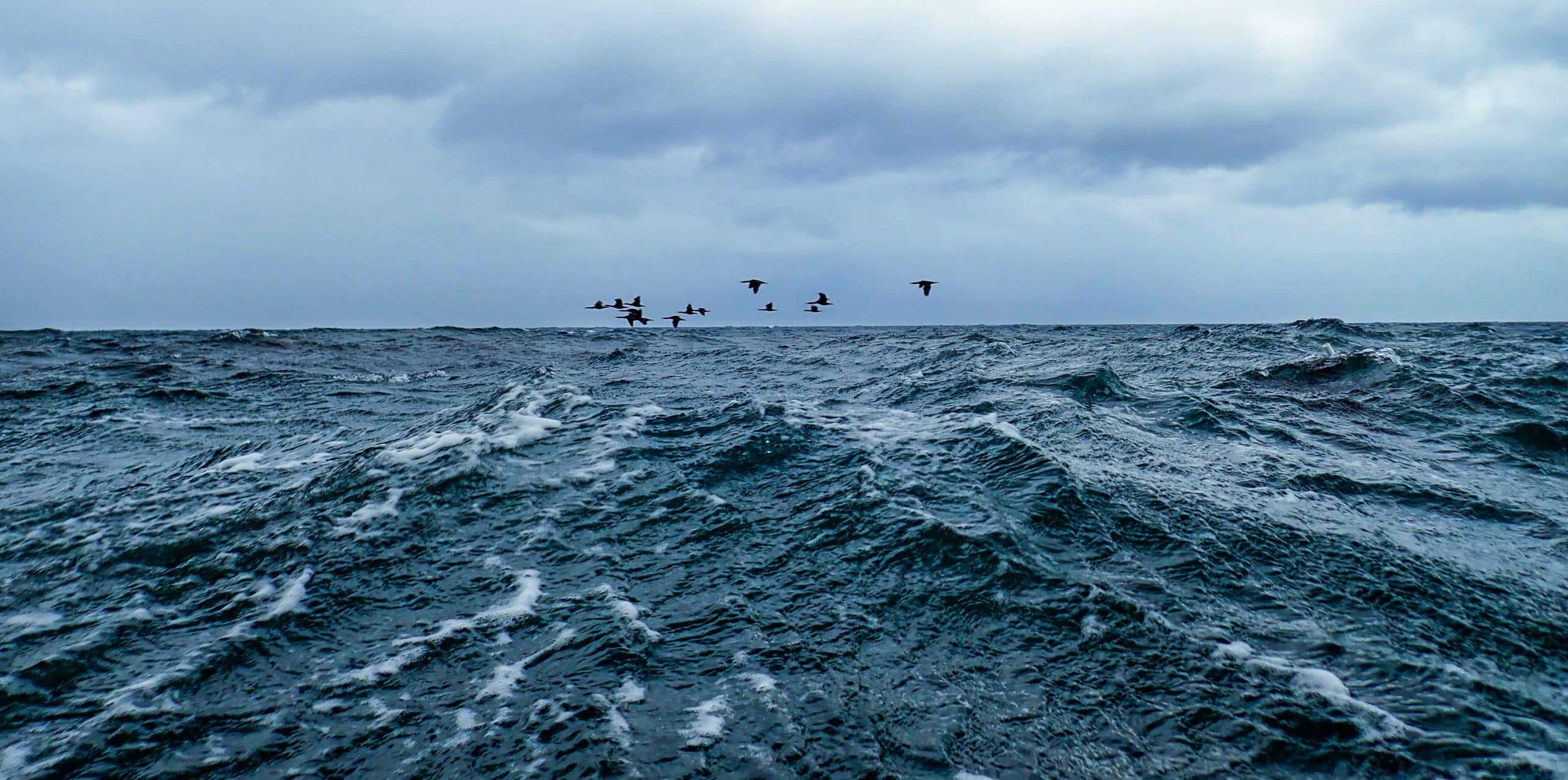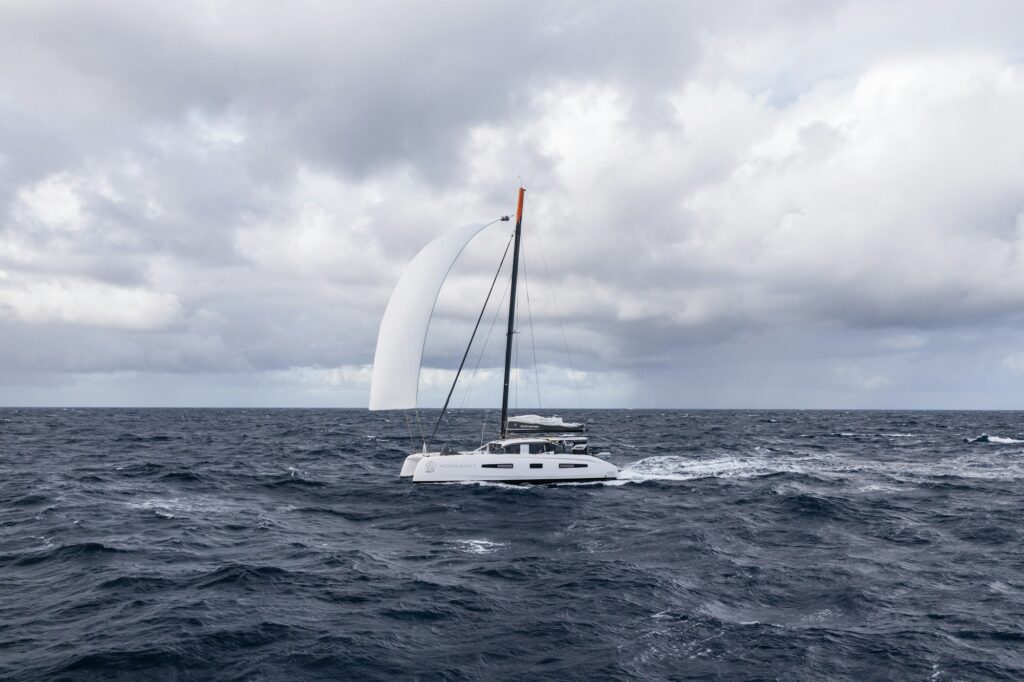
Author: Nikki Henderson
Every blue-water sailor will end up coping with seasickness. That is a certainty. Whilst it may not be you, it is inevitable that you will at the least be called upon to support one of your seasick crew. Feeling a little ‘green’ on the first few days of a passage is normal. And despite the irritating stigma that surrounds this natural and normal bodily reaction, being seasick does not make you weak, or a ‘lesser’ sailor and it is certainly not something to feel ashamed or embarrassed about.
How many times have I heard fellow sailors say, “oh I never get seasick.” It’s extremely rare for a sailor to have genuinely never been seasick. Looking back over my 20 years of sailing yachts, I can only recall a handful of people who have been fully immune to it. Us regular queasy folk tend to watch those people – green with envy as well as seasickness. Whilst they happily hang around reading their book on day 1 of a passage, we are hot footing it from the deck to our bunks praying that we manage to get horizontal before our stomachs feel the churning wrath of being down below.
And yes, I do say ‘we’. Whilst it is more unusual these days for me to feel seasick, my insides can sometimes feel unsettled on the first few days of a passage, especially if it is very rough. I’m casting my mind back to sailing in the English Channel just a few months ago. Less than 24 hours in, I was head down pumping the diesel tainted bilge water whilst we sailed upwind into a gale – and there was some very deep breathing going on! Next time you feel unwell, know that you are not alone – the pros can feel it too.
I’m not a doctor and am not qualified to tell you how to cure seasickness. But I encourage you to find out what helps you keep it under control. Try as many different options as you can, because it is as much an illness of the mind as it is the body. When you find the answer – however weird it is – stick with it and trust yourself. I have seen people try scopolamine patches, Stugeron, Kwells, and other meds; I’ve seen people eating ginger like it’s going out of fashion; wearing the pressure point wrist bands; some people fast; some people eat; a friend of mine swears by salt and vinegar crisps; others spend as much time as they can horizontal with their eyes closed; some just grin and bear it and work through it; and some curl up in the foetal position – wonder if they are dying – and then emerge re-born a few days later and feel fine again. There are no ‘good’ or ‘bad’ answers, as long as they don’t involve you beating yourself up or feeling guilty. There is no one who gets seasickness intentionally (that would be odd…). So, anyone who is resenting you for being sick needs to work on their empathy – this is their issue. Not yours.
When it comes to seasickness, prevention is better than cure.
So the above remedies need to be consumed before you feel sick for them to work. But there are some common triggers too – worth avoiding if you can.
Anxiety is the most common cause of seasickness that I’ve observed. Feeling nervous about a passage or worried about being seasick specifically, is a fast track to getting sick. In fact, the only time I have personally ever actually vomited from seasickness was as much as an emotional reaction than it was physical. Working on how to calm and relax yourself – possibly with a professional therapist – could be a good investment if you think this might be a risk for you.
A selection of other common triggers to seasickness that I’ve encountered are as follows: starting a passage in heavy weather; eating rich food, (although this one can be questionable: “It’s not seasickness I think that it must have been the cheese” – while the boat slams upwind in 40 knots); multi-directional sea-states; other people vomiting near you, or on you (yes that happens); pungent smells – bacon/curry/diesel; being dehydrated; not eating enough; eating too much’ being hungover; over exerting yourself during a sail change; getting too hot. Try to avoid as many of these as you can.
So many of us struggle through seasickness. We talk so much about prevention and cure – but what about how to support and care for someone who is seasick? How can we ease the suffering of our crewmates who are confined to their bunks? This, to me, is the key point I’d like anyone reading this blog to take away.
To start with – lets talk empathy.
How does it feel to be seasick, apart from feeling nauseous and unwell? A seasick crew member will feel left out and lonely. They will be able to hear the rest of the crew chatting and laughing and having fun, whilst they lie on their own feeling alone. They will hear the boat sailing and feel like they are missing out. The noises of the boat are amplified down below – the slaps of the waves on the hull, the griding of electric winches and the flogging of sails. Without context this can be scary. It can sound so much worse than it is, and they might start running all possible scenarios in their mind. They may also feel helpless, undignified, and embarrassed; it’s likely they won’t have brushed their teeth in a few days, or washed, or even left their bunk at all. And they will feel sad. They came to sea to experience the magic of the ocean – the stars, the horizon, the dolphins, the boat carving through the water, sunrises, sunsets – and if they are sick in their bunk, they see nothing but the inside of their eyelids.
Inspired by two courageous crew members I had last year who were tragically seasick for four days out of six on a passage from Sweden to the UK, here are some suggestions of how to best support your seasick crewmate:
- Create a watch schedule to check on your crewmate on a regular basis so they are never alone for too long.
- Set up a system for the crewmate to let you know they need help, as they probably don’t have the energy to shout or get out of bed. A VHF radio in their bunk perhaps on an agreed channel. Or a flag system. A bell maybe. Just make sure you can hear or see it from the deck.
- When you check on them, talk to them gently. Just because their eyes are closed does not mean they are asleep.
- Hold their hand maybe.
- Tell them what’s going on: where you are, what the sail set is, what the navigation plan is. In other words, give them the context they are missing.
- Spend time with them rather than just fleeting visits to tick a box. Entertain them. Make them feel less of a burden and more of your friend.
- Help them to feel clean and human: wipe their face with a cool flannel, bring them a toothbrush and a bowl to spit out in, possibly even administer deodorant.
- As they recover, ease them back in gently. Help them to feel part of the team they so wanted to be part of these past few days. Give them jobs that make them feel needed – but ones that are also accessible to someone who is still likely weak and slow. Navigation perhaps. Or helming whilst sitting down.
I started this blog by stating out the inevitability of seasickness for any blue-water sailor. I’ll finish with a reminder that it is worth it. Get through those first few days – perhaps a week – and just one sunny day with glorious wind and good company truly can be enough to make it all worth it. The beauty of sailing lies in contrast.



